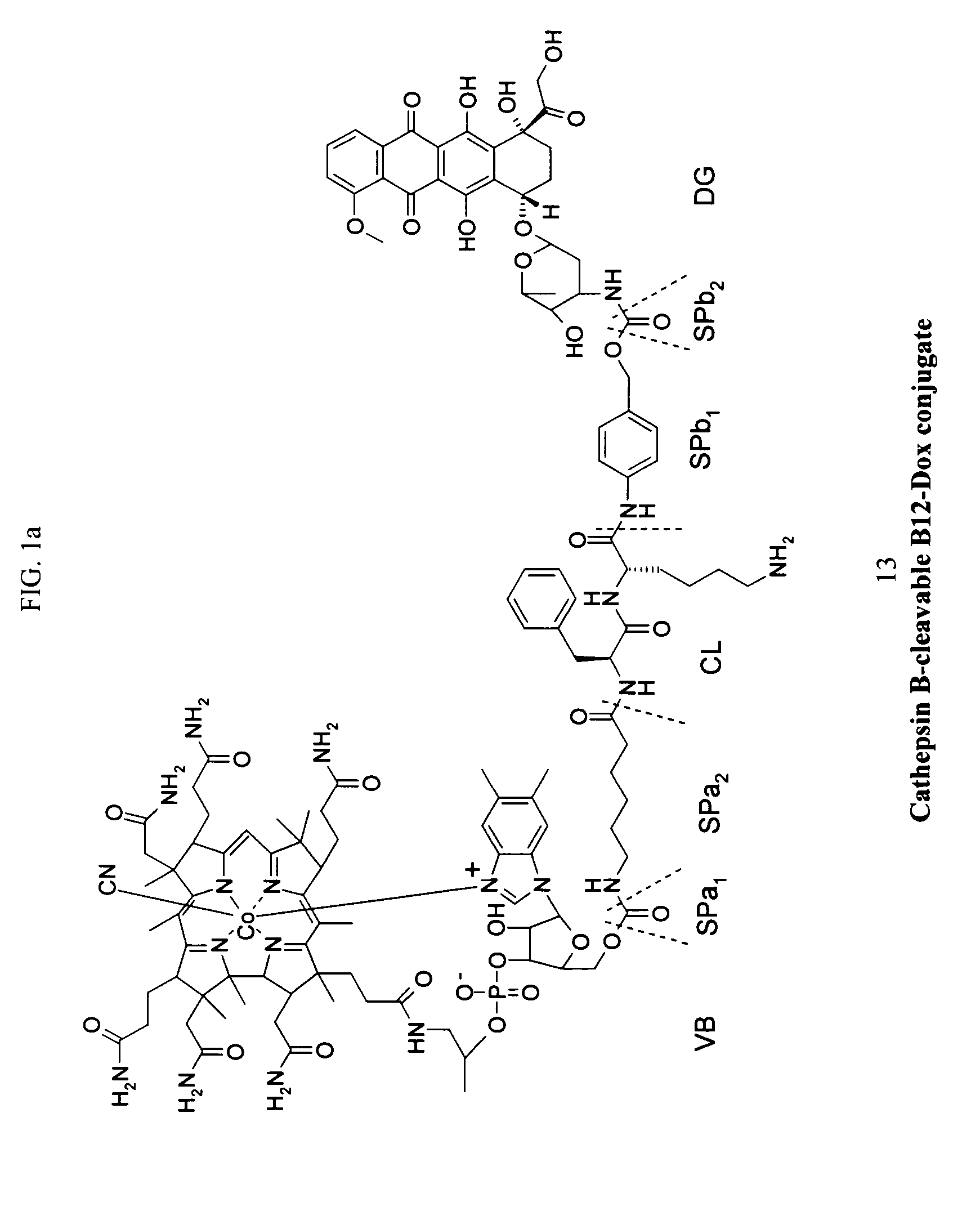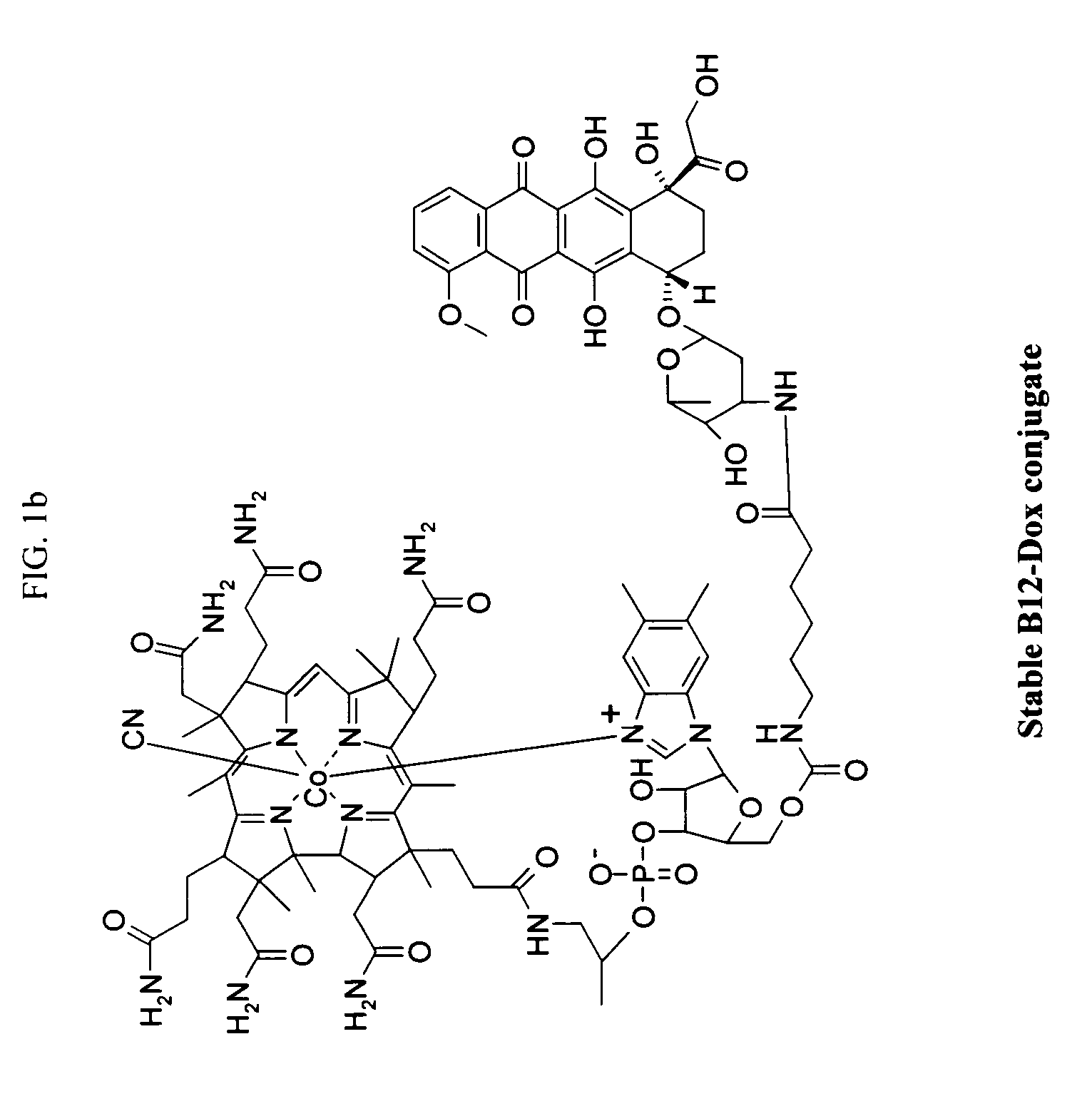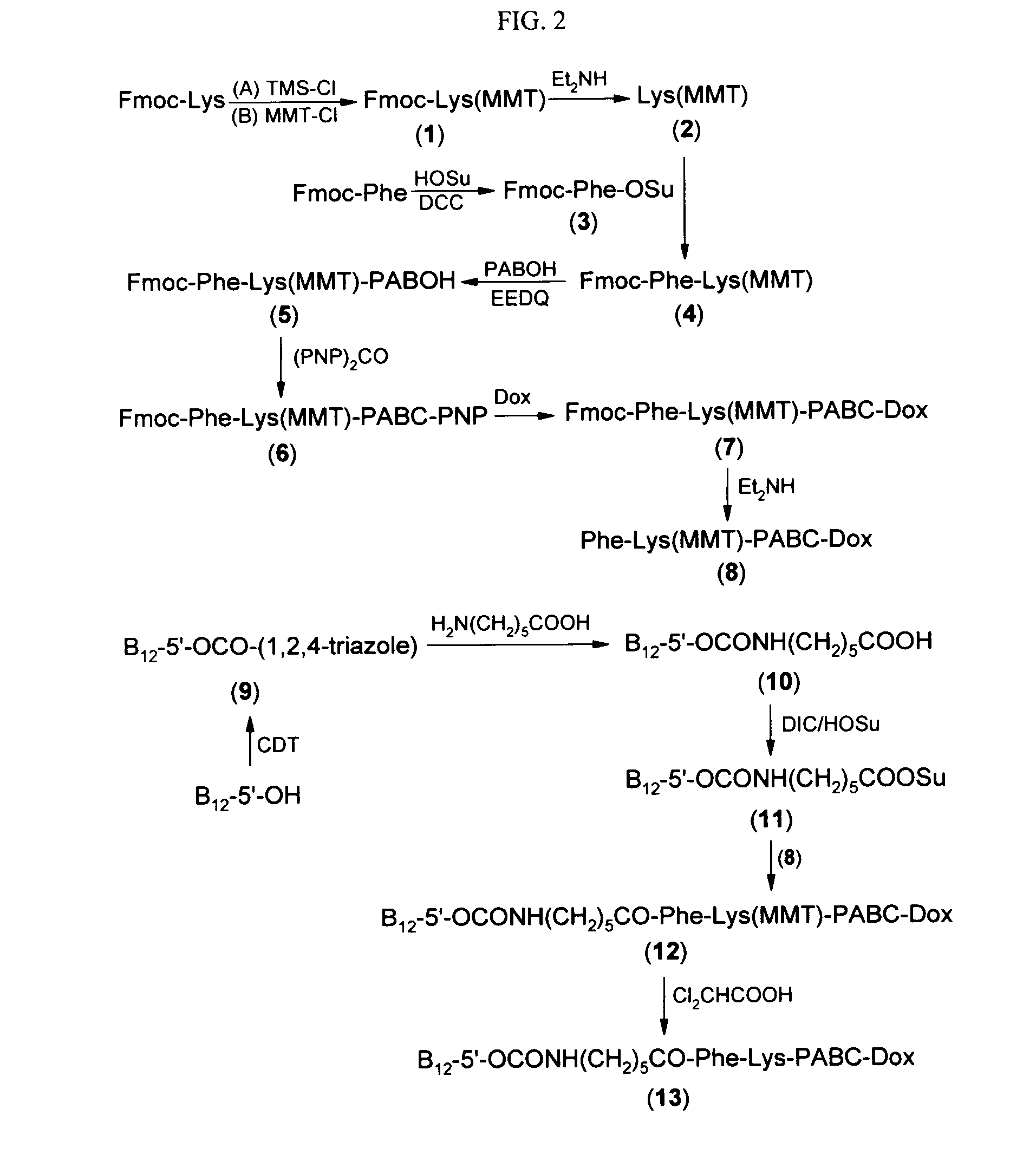Cobalamin conjugates for anti-tumor therapy
a technology of conjugates and cobalamin, applied in the field of conjugates of cobalamin, can solve the problems of not disclosing intravenous administrable anti-tumor conjugates, not disclosing 5′-oh derivatives of vb-12, and meeting a range of successes and failures
- Summary
- Abstract
- Description
- Claims
- Application Information
AI Technical Summary
Benefits of technology
Problems solved by technology
Method used
Image
Examples
example 1
[0218]The following procedure was used to prepare the exemplary doxorubicin-VB conjugate of FIG. 1.
Step 1. Fmoc-Lys(MMT) (1)
[0219]To a stirred suspension of Fmoc-Lys (5.1067 g, 13.8618 mmol, 1.0 eq) in methylene chloride (75 ml) at room temperature was added trimethylsilyl chloride (3.8 ml, 29.7312 mmol, 2.14 eq). The mixture was refluxed at 50° C. for 1 hr and the appearance of the solid in the reaction mixture changed. After being cooled in an ice bath, DIEA (7.5 ml, 43.0561 mmol, 3.11 eq) was added, the mixture became homogeneous, and followed by p-anisyldiphenylmethyl chloride (4.4955 g, 14.5580 mmol, 1.05 eq). The orange-red solution was stirred at room temperature overnight (20 hrs). After removal of solvent, the residue was partitioned between ethyl acetate (200 ml) and pH5 buffer (0.05M phthalic acid, adjusted with 10N KOH to pH 5.0). The organic phase was washed with more pH5 buffer (50 ml×2), water (50 ml×1), brine (50 ml×2), dried over magnesium sulfate. After removal of ...
example 2
[0232]The following method was used to confirm the cleavability of the anti-tumor conjugates, esp. (13), by cathepsin B. A conjugate stock solution (5% DMSO in water) containing the doxorubicin-CB conjugate (13) (1.0 mM) was prepared. Cathepsin B (human liver; Calbiochem, #219364; MW: 27500; specific activity: 274 units / mg protein, 5 units) was placed in 32.1 μl of NaOAc (20 mM, 1 mM EDTA, pH 5.0). Then 1 μL of cathepsin B was activated with 4 μL of 30 mM DTT / 15 mM EDTA at room temperature for 15 min. This solution was diluted with 665 μL of 25 mM NaOAc / 1 mM EDTA buffer (pH5.0, pre-incubated at 37° C.) to prepare an enzyme stock solution. 96 μL of the enzyme stock solution was mixed with 1 μL of conjugate stock solution, and incubated at 37° C. for 60 min. Final concentration: [cathepsin B]=30 nM, [substrate]=10 μM. The extent of reaction was monitored by periodic sampling and subsequent HPLC analysis (buffer A: 0.1% HOAc, buffer B: acetonitrile, 20-50% B over 20 min, monitored at 4...
example 3
[0234]The following procedure was used to investigate the affect of the cobalamin-doxorubicin conjugate on tumor growth, particularly for the delay of growth of MX-1 human breast carcinoma xenograft in athymic mice. Female nude Harlan mice are implanted subcutaneously with 1 mm3 MX1 solid tumor fragments in the flank. During the pre-dose phase of implantation and growth, tumors are initially monitored twice weekly, and then daily as the neoplasms approach the desired size of 80-120 mg. When the majority of tumors have attained the targeted weight range (80-120 mg), mice are pair-matched into 4 treatment groups of 10 mice each comprised of no treatment, 3 mg / kg / day×5 days intravenous Doxorubicin (active control), 64 mg / kg / day×5 days intravenous bioconjugate and 32 mg / kg / day×5 days intravenous bioconjugate. Test articles were administered on the day of pair matching, Day 1. The tumor growth delay endpoint is reached when the tumor on the mouse reaches 1.5 gm weight, estimated by the f...
PUM
| Property | Measurement | Unit |
|---|---|---|
| time | aaaaa | aaaaa |
| flow rate | aaaaa | aaaaa |
| flow rate | aaaaa | aaaaa |
Abstract
Description
Claims
Application Information
 Login to View More
Login to View More - R&D
- Intellectual Property
- Life Sciences
- Materials
- Tech Scout
- Unparalleled Data Quality
- Higher Quality Content
- 60% Fewer Hallucinations
Browse by: Latest US Patents, China's latest patents, Technical Efficacy Thesaurus, Application Domain, Technology Topic, Popular Technical Reports.
© 2025 PatSnap. All rights reserved.Legal|Privacy policy|Modern Slavery Act Transparency Statement|Sitemap|About US| Contact US: help@patsnap.com



